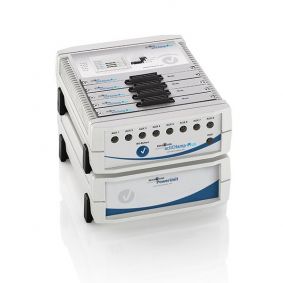Introduction
A local increase in cortical blood flow accompanies almost all neuronal responses to stimulus in the brain. This relationship, termed
neurovascular coupling , involves many steps from the initial firing of the neurons to release of chemical transmitters to final vasoconstriction or vasodilatation. Understanding this relationship between brain activity and the resulting changes in metabolism and blood flow remains a vital research area.
EEG and fNIRS capture signals inherent to different steps in this cascade of events, linked to the same neural activity. The combination of these two methodologies offers the possibility to examine cortical activity more comprehensively. EEG and fNIRS have very different and complementary temporal resolution and functional localization features: while EPs detect the cortical response to a given stimulus with high temporal resolution, fNIRS localizes changes in oxygen metabolism that follow upon neural activation.


